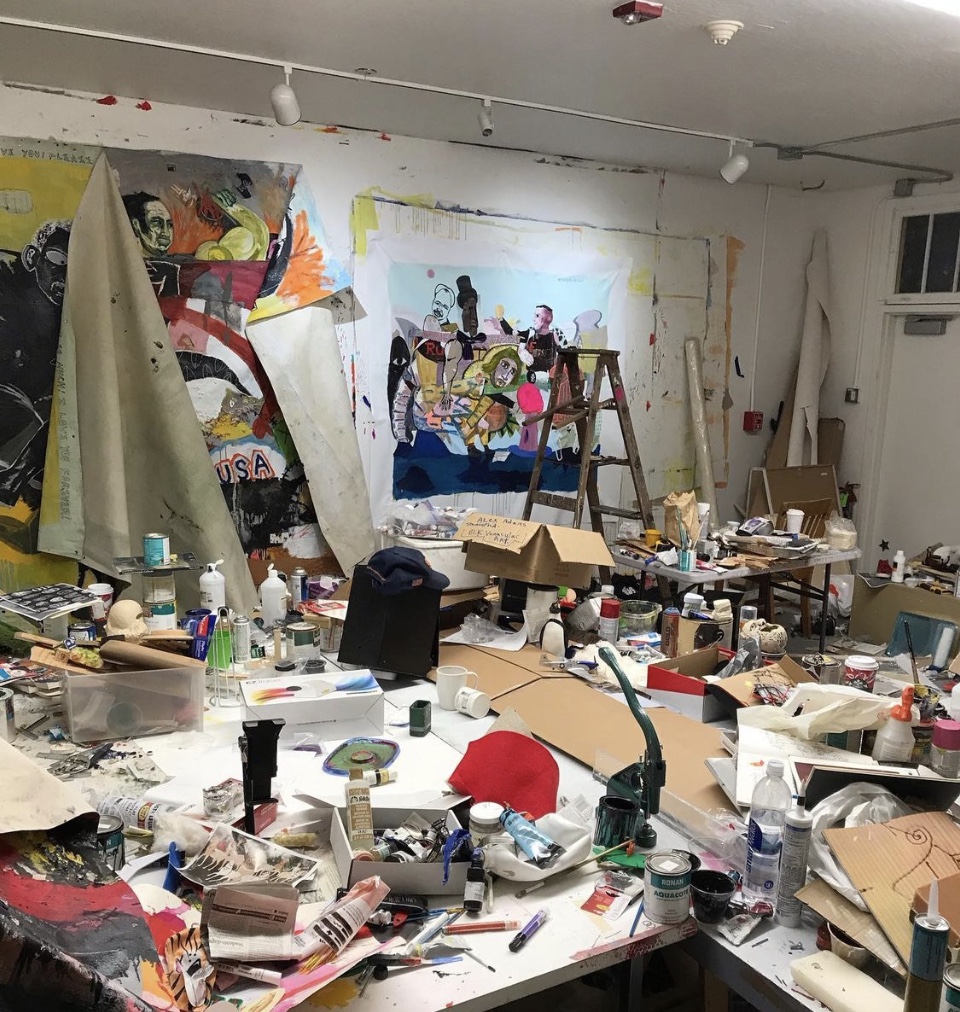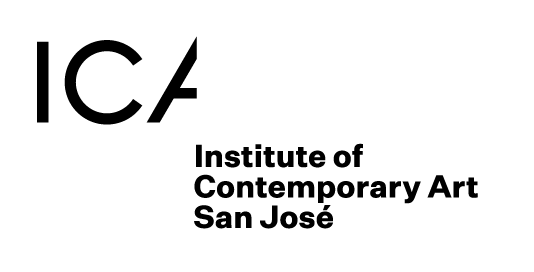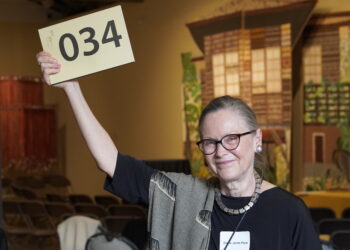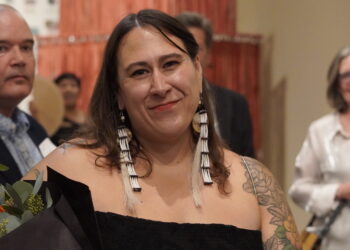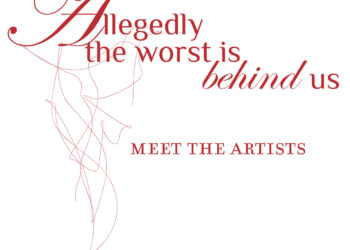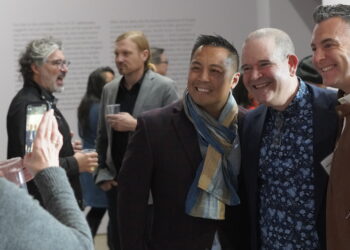What Posting a Selfie’ll Get You
Have you ever wondered how a single selfie can lead to a whole new library of knowledge? On day two of my tenure at the Institute of Contemporary Art San José, I posted a selfie from the Conrad Egyir: Chapters of Light exhibition. The ICASJ team had transformed the Elaine Cardinale Room Gallery into a selfie station, where a specially designed Instagram filter could be used to turn your photo into a Conrad Egyir portrait look-alike with unifying tones of yellow, red or blue.
I didn’t quite do it right, I just got a shot of my own with a basketball for my son. There’s even a weird, cast shadow that looks like I have a big stain on my shirt (but we’ll say it’s part of the shirts’ artistic design). I also am holding onto Fred Moten and Ralph Ellison books, pulling inspiration from the portrait of Egyir’s studio assistant in the other room.
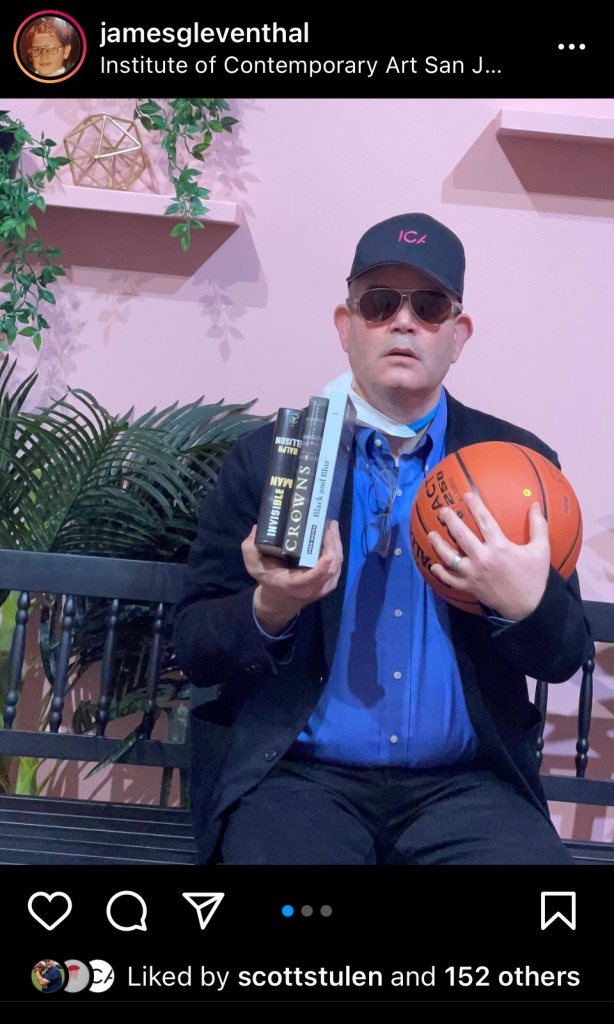
In my accompanying instagram caption, I made a note about how I thought Invisible Man was the “Greatest American Novel.” After I posted, an artist whom I’ve been following for a while, Gregory Rick, made a comment saying, “Did you know Chester Himes once stabbed Ralph Ellison at a party?“.
It’s this very kind of exchange of knowledge I love to have, thanks to media being social. We got into a nice exchange in instagram dm’s, and I had to confess my ignorance about this fact. I did not know about Himes’ work, but I was determined to fix that. I looked up his works on my free audiobooks app with the San José Public Library. With my daily commute being around 45 minutes, I knew these Audiobooks would perfectly fill that time with wonder and learning. I found that the library had a recently published biography of Chester Himes, and listening to it completely blew my mind open; The biography, beautifully crafted by Lawrence P. Jackson, is an amazing compendium of Black brilliance from the last century. If you can check-it out, I would highly recommend a listen on your next car ride:
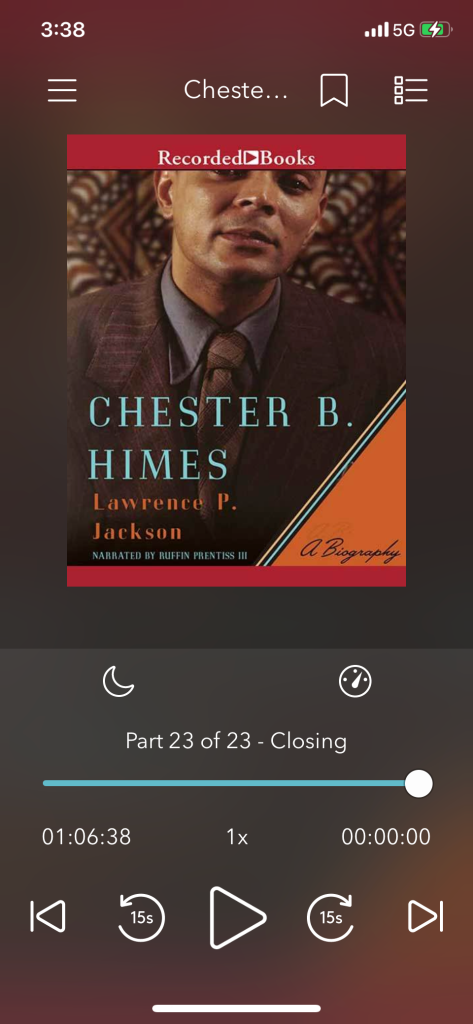
The book fully addresses the issue it sets out to, namely providing a reserve for better understanding of Black creatives across the 20th century. One of the things I learned from the biography was that Gordon Parks, working for Luce and Life magazine, was assigned to do his extraordinary photo essay on Ellison’s Invisible Man in an effort to support Ellison‘s fame over Richard Wright’s, because Wright was a communist. Here, I have always loved Gordon Parks Invisible Man works, thinking them, like the novel, to be one of the more sublime artistic artifacts of the 20th century. But I did not appreciate the political milieu of media efforts to manage the position of various Black creatives in the minds of Americans. While it may be self-apparent, I had not considered it in this context, but understood the significance this had in my interpretation of the work.
By the way, several Gordon Parks works just went on display at the Cantor Art Center center at Stanford presently, thanks to a new gift from the Capital Group Foundation. In fact, one of them is the signature image for the exhibition, Emerging Man, Harlem New York 1952. My favorite has always been the one with the record players, downstairs, surrounded by lightbulbs, and the Jeff Wall piece it inspired.

Oh, and Rick is short listed for the SECA award. Check him out. His work could not be more timely; reminding us through his use of violent tropes and modernist-influenced forms that the more we change the more we stay the same. Also, shout out to Ishmael Reed, who was a teacher of Rick’s and a great advocate of the work of Himes. Next I got to read Mumbo Jumbo!
